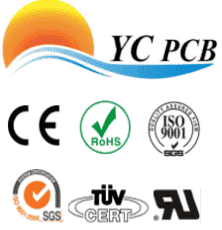Introduction:
Printed Circuit Boards (PCBs) are the backbone of modern electronic devices, enabling the seamless integration of various electronic components. PCB components are the essential building blocks that make up these intricate circuit boards. From resistors and capacitors to integrated circuits and connectors, each component plays a crucial role in ensuring the functionality and performance of electronic devices. In this article, we will delve into the world of PCB components, exploring their functions, types, and significance in today's technological landscape.
Resistors:
Resistors are passive electrical components that limit the flow of electric current in a circuit. They are primarily used to control voltage levels, set current flow, and divide voltages. Resistors are available in various types, including fixed resistors, variable resistors (potentiometers), and specialized resistors like thermistors and photoresistors. Their values are measured in ohms (Ω), and they are essential for maintaining signal integrity and protecting sensitive components.
Capacitors:
Capacitors store and release electrical energy, acting as temporary power reservoirs in electronic circuits. They are widely used for smoothing power supply fluctuations, filtering noise, and decoupling sensitive components from voltage spikes. Capacitors come in different types, such as electrolytic capacitors, ceramic capacitors, and tantalum capacitors, each with specific characteristics suited for different applications.
Diodes:
Diodes are semiconductor devices that allow current to flow in only one direction while blocking it in the opposite direction. They serve as essential components in rectification, signal conditioning, and protection circuits. Popular types of diodes include the standard PN-junction diodes, Schottky diodes, Zener diodes, and light-emitting diodes (LEDs), which emit light when current passes through them.
Transistors:
Transistors are active electronic components that amplify or switch electronic signals and serve as the building blocks of digital circuits. They can be classified into various types, such as bipolar junction transistors (BJTs) and field-effect transistors (FETs). Transistors are fundamental for amplifying weak signals, enabling digital logic operations, and driving various loads in electronic circuits.
Integrated Circuits (ICs):
Integrated circuits, or ICs, are miniaturized electronic circuits that incorporate numerous components, such as transistors, resistors, capacitors, and diodes, onto a single chip. They are the heart of modern electronics and are categorized into various types, including microprocessors, memory chips, and application-specific integrated circuits (ASICs). ICs revolutionized electronics by enabling high-density, low-power, and high-performance circuitry.
Connectors:
Connectors are crucial PCB components that facilitate the interconnection between different electronic devices or subsystems. They allow for easy plugging and unplugging of cables, enabling the transfer of power, data, and signals. Common types of connectors include USB, HDMI, Ethernet, and audio connectors. Connectors are critical for ensuring reliable and robust connections in complex electronic systems.
Conclusion:
PCB components are the fundamental elements that make electronic devices function smoothly and efficiently. From resistors and capacitors that control and store energy to transistors and integrated circuits that amplify and process signals, each component plays a vital role in the overall functionality of a PCB. Understanding the different types of components, their functions, and how they interact is essential for designing and manufacturing electronic devices. As technology advances, PCB components continue to evolve, becoming smaller, more efficient, and capable of handling increasingly complex tasks. With continuous innovation, PCB components will shape the future of electronics, enabling the development of smarter and more sophisticated devices.


